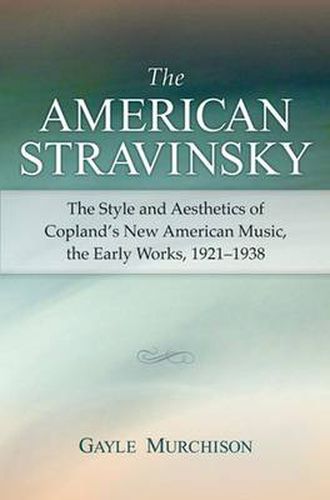Readings Newsletter
Become a Readings Member to make your shopping experience even easier.
Sign in or sign up for free!
You’re not far away from qualifying for FREE standard shipping within Australia
You’ve qualified for FREE standard shipping within Australia
The cart is loading…






One of the country’s most enduringly successful composers, Aaron Copland created a distinctively American style and aesthetic in works for a diversity of genres and mediums, including ballet, opera, and film. Also active as a critic, mentor, advocate, and concert organizer, he played a decisive role in the growth of serious music in the Americas in the 20th century. In The American Stravinsky, Gayle Murchison closely analyzes selected works to discern the specific compositional techniques Copland used, and to understand the degree to which they derived from European models, particularly the influence of Igor Stravinsky. Murchison examines how Copland both Americanized these models and made them his own, thereby finding his own compositional voice. Murchison also discusses Copland’s aesthetics of music and his ideas about its purpose and social function.
A marvelous contribution to the research on Copland, American music, and early twentieth-century Euro-American musical aesthetics. Murchison’s methodology may in fact be part of an avant-garde reconsideration of theoretical analysis with a richer understanding of cultural context, the latter a result of ‘New Musicology.’ Murchison sets a new mark for Copland scholars.
-Marta Robertson, Department of Music, Gettysburg College
$9.00 standard shipping within Australia
FREE standard shipping within Australia for orders over $100.00
Express & International shipping calculated at checkout
One of the country’s most enduringly successful composers, Aaron Copland created a distinctively American style and aesthetic in works for a diversity of genres and mediums, including ballet, opera, and film. Also active as a critic, mentor, advocate, and concert organizer, he played a decisive role in the growth of serious music in the Americas in the 20th century. In The American Stravinsky, Gayle Murchison closely analyzes selected works to discern the specific compositional techniques Copland used, and to understand the degree to which they derived from European models, particularly the influence of Igor Stravinsky. Murchison examines how Copland both Americanized these models and made them his own, thereby finding his own compositional voice. Murchison also discusses Copland’s aesthetics of music and his ideas about its purpose and social function.
A marvelous contribution to the research on Copland, American music, and early twentieth-century Euro-American musical aesthetics. Murchison’s methodology may in fact be part of an avant-garde reconsideration of theoretical analysis with a richer understanding of cultural context, the latter a result of ‘New Musicology.’ Murchison sets a new mark for Copland scholars.
-Marta Robertson, Department of Music, Gettysburg College